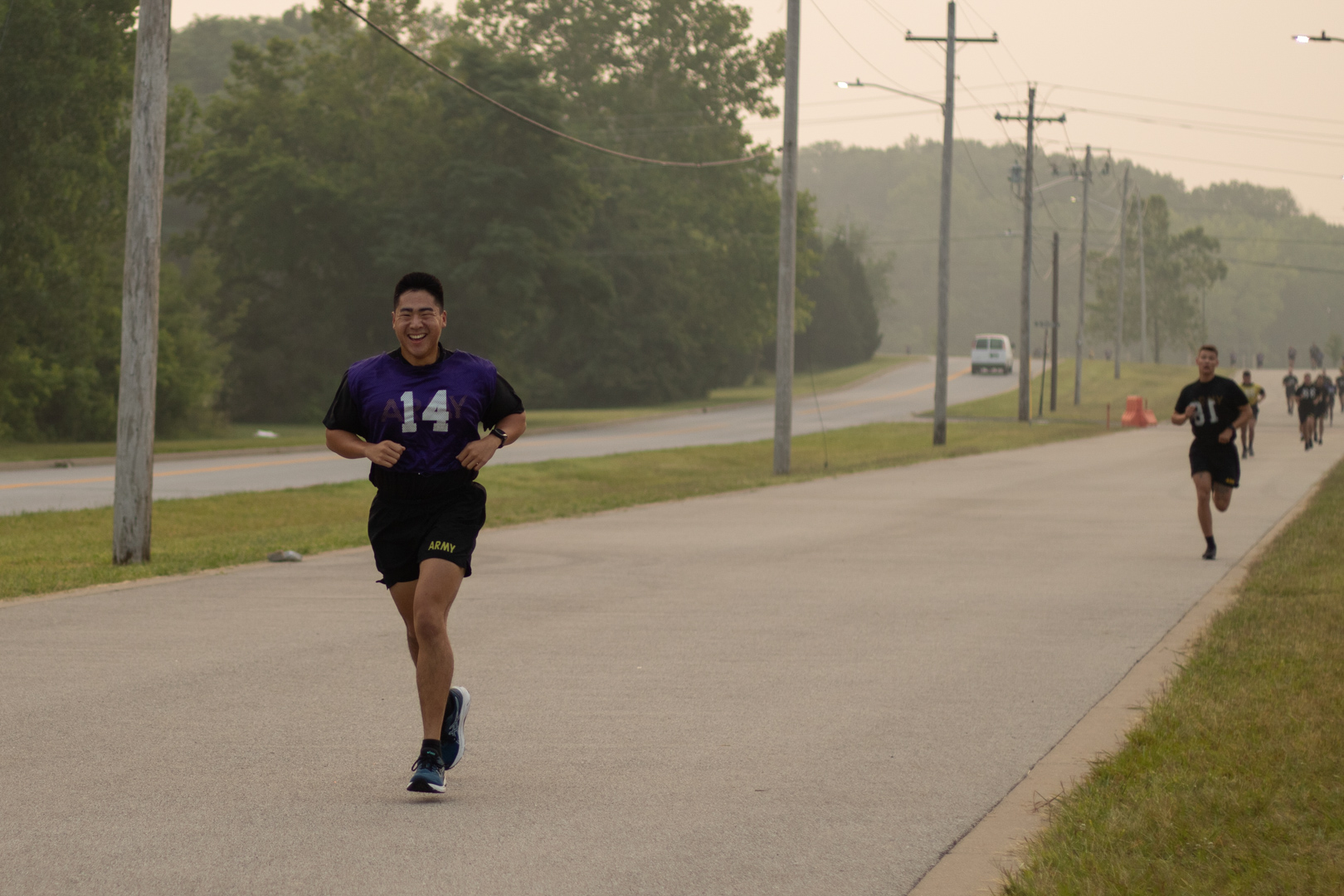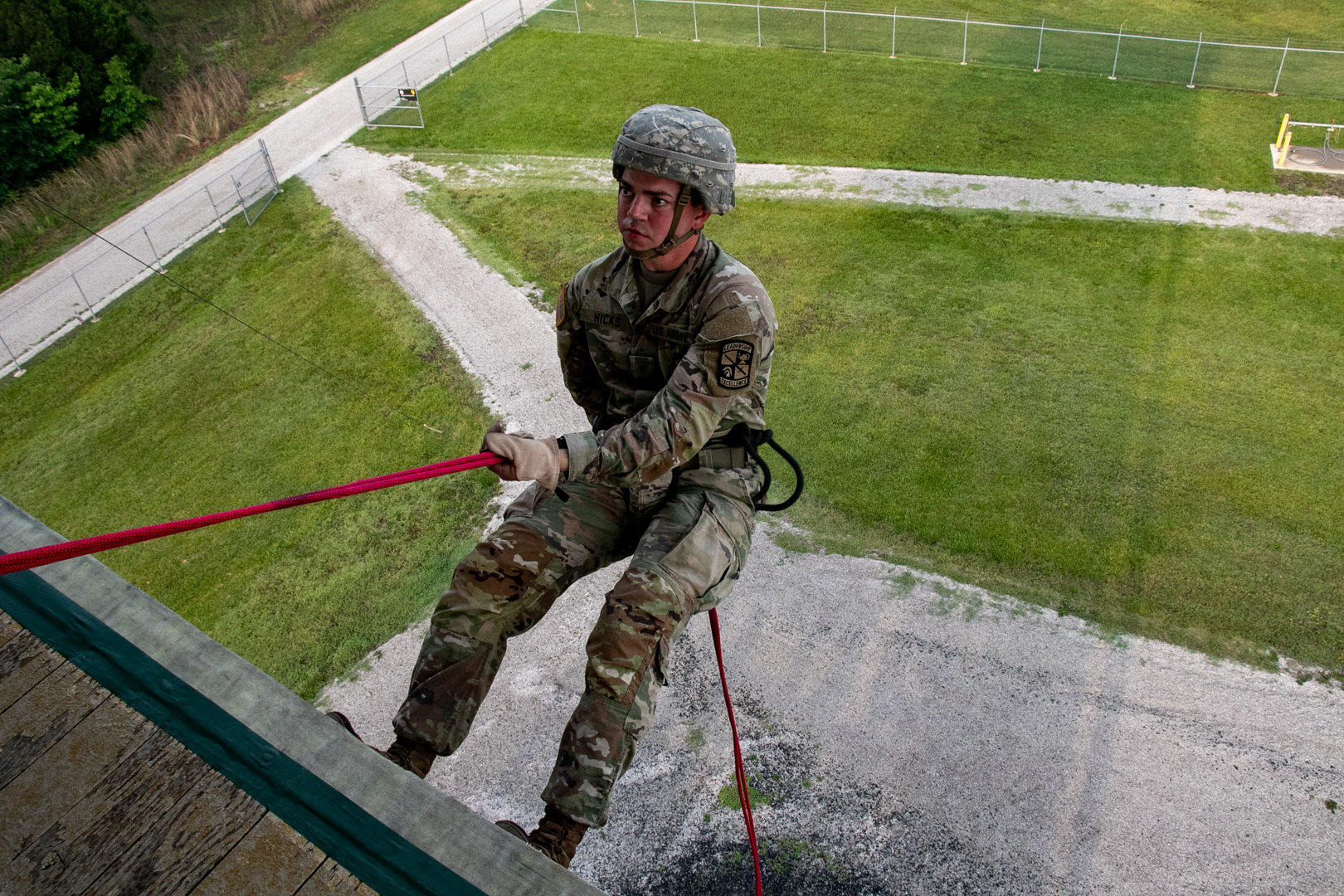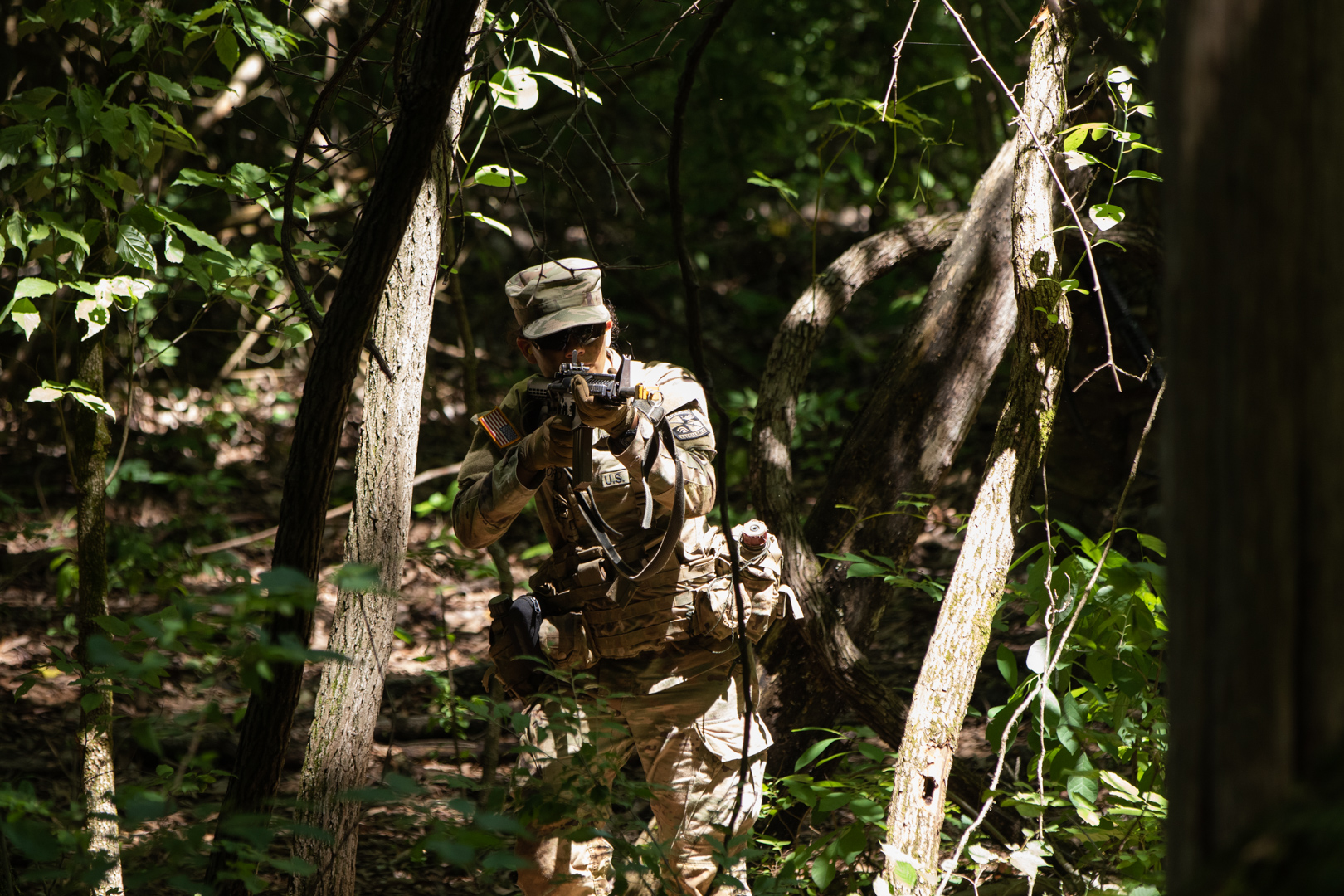FORT KNOX, Ky,–Squad situational tactical exercises (STX) bring teams together to develop problem solving skills and gain real-life experience through scenario training involving Atropia, a mock city setting.
“Being an opposing force (OPFOR), I didn’t really think that this would be the most exciting thing, but honestly it’s not that bad. It gives us an opportunity to learn as well as make new friends which is really great.” said Cadet Anthony Hazboun of Dickinson State University-Harrisburg, a Basic Camp Cadet that was helping with the role-play scenarios.
Several Basic Camp Cadets were utilized in this exercise to act as the Ariana military forces, the opposing force to Atropia. The Advaced Camp Cadets acted as the combat Soldiers.
In the scenario being used, the U.S. Army supports Atropia in the training exercises, and the Ariana military forces believes there to be conflict. There were conflicts between the two forces in the past, and the Army is helping protect the lands from being seized by the opposing force.

Cadet Jake Zortz, Pittsburg State University, of Weir, KS imitates being prepared to shoot a weapon during a Squad Situational Tactical Exercise (STX). He is a part of the 1st Regiment of Advanced Camp at CST 2017.
“Our role as cadets, or OPFOR, is to help Advanced Camp Cadets learn how to use their tactics and help them improve their knowledge in situations.” explained Cadet Hazboun.
The scenario took place in a mock village that was composed of several buildings designed to look like an actual city that cadets may encounter including a village home with livestock, a meat market and a fruit and vegetable stand.
There were also squads in other parts of Training Area Redwolf. These squads represented the Army Soldiers that were Atropia’s allies. Cadets Elizabeth Marsteller and Jonathan Swidrak were two of the Cadets in 1st Regiment’s Alpha Company, that were assigned as squad leaders for the exercise.
“My role today is a squad leader conducting a ‘movement to contact mission’ to destroy any enemy forces in the area.” said Swidrak, Rochester Institute of Technology, of Dracut, Massachusetts.
He shared that he hoped to gain valuable leadership skills and experience in troop leading procedures and to learn how the planning process works as well as mission execution from the mission.
Cadet Eizabeth Marsteller, University of South Carolina, of Tocoa, Georgia, acted as the 3rd squad leader for the attack squad. This is the squad that, once first contact is made, sweeps through and takes out the enemy.

Cadet Elizabeth Marsteller, University of South Carolina, of Toccoa, GA leads her squad during a Squad Situational Tactical Exercise (STX). She is the Squad leader of Squad 3 during this exercise located in TA12. She is currently active duty and has served for 11 years.
“I hope to gain a little more knowledge on tactics. That way, when we are going through the next phase of our field problems next week, I’ll be able to execute a little bit more precisely and a little bit more quickly.” said Marsteller.
Marsteller, who served on active duty for 11 years, said that she is excited for graduation day, but more importantly for being able to network with all of the other Cadets and further build life-long relationships with them for her future military career.
“Leadership is the ability to motivate and give someone purpose and direction and have them be able to do it not because they had to but because they want to.” said Marsteller.
Cadets carefully planned and prepared for the STX exercise. They gathered in their squads in the woods that was their designated planning area, and they worked together to form a plan to protect Atropia from the Ariana military forces. Teams wore the proper gear and carried weapons that held blank rounds. They also covered their faces in camouflage face paint to blend in to the foliage, as they would do in a real-life situation.
Cadet Summer Training will bring 8,200 Cadets through Basic and Advanced Camp this summer on Fort Knox. These camps are designed to help challenge, grow and improve various skills and leadership qualities within the Cadets. If you think you have what it takes to be a Cadet or if you are interested in a job after college click the following link: https://my.goarmy.com/info/rotc1/index.jsp?iom=IP08-AUTO-R1NA-BR-XXX-XX-XXX-MO-XX-X-BRCMAC:IP08




